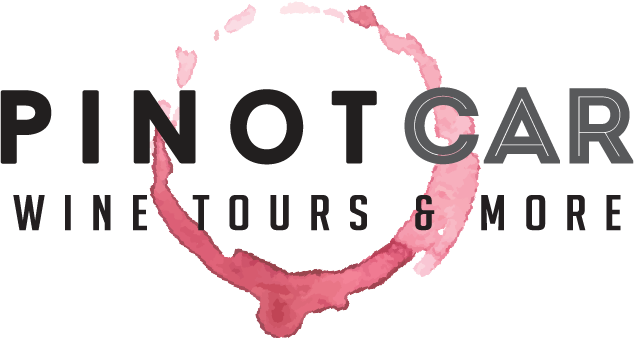How do they do that?
Tiny Bubbles! How do they do that?

I think Don Ho said it best:
Tiny bubbles
In the wine
Make me happy
Make me feel fine
So why do we love those tiny bubbles?
Is it the tickle of those delicate ebullitions on your nose?
Or the sophistication you feel while sipping the wine of status and prestige?
Maybe it’s because it embodies the joy of celebrating something special?
Or do you just like that distinctive “pop” of the cork?
For whatever the reason you enjoy sparkling wine, you may still wonder, “How do they get all those tiny bubbles in there?”
The secret – a second fermentation! Once the winemaker is satisfied with the initial fermentation of their base wine, a mixture of yeast and sugar called liqueur de tirage is added, producing carbon dioxide gas (CO2) which gives us that delicate stream of those fantastic little bubbles.
There are 6 different methods of creating those bubbles, each producing their own carbonation level and style – Traditional, Tank, Transfer, Ancestral, Carbonation and Continuous.
Traditional Method (a.k.a. Méthode Champenoise or méthode traditionnelle) is the most appreciated method and the most costly and time consuming to produce. Young grapes (perfect for their acidity) are fermented into base wines and blended to form cuvée. The liqueur de tirage is added to the cuvée which is then bottled and topped with crown caps (like beer caps). The second fermentation starts to create CO2 inside the bottle, carbonating it. The wine is then aged on its lees (the dead yeast particles) for a minimum of 9 months and up to 3 years (vintage Champagne). Once properly aged the bottles are turned upside down so the lees settle in the neck (riddling). The neck of the bottle is submerged into freezing liquid causing the lees to freeze. The crown cap is removed allowing the frozen lees to pop out (disgorge). Then a mixture of wine and sugar (dosage) is added to balance out the acidity. The amount of sugar in the dosage is what gives the wine its sweetness level from “tart” (Extra Brut, Brut, Extra Dry) to “sweet” (Sec, Demi-Sec, Doux). Finally, after all the labor of love, the wine is corked and topped with its distinct wire cage.
Tank Method (a.k.a. Charmat Method or Metado Italiano) is a less expensive process thus making it more affordable to produce and sell. Although it is not as high quality as those wines made in the traditional method, the tank method still creates fine sparkling wines. The real difference between traditional and tank is that the tirage is added into a large tank instead of individual bottles. As the second fermentation releases the CO2, the tank is pressurized. The young wine is then filtered, the dosage is added and bottled.
Transfer Method (a.k.a. Transversage) is the same process as the traditional except the individual bottles are emptied into pressurized tanks then through pressurized filters to remove the lees. Pressurized fillers are then used to bottle the wine.
Ancestral Method (a.k.a. Méthode Ancestrale, Méthode Rurale, Pétillant Naturel or “Pet-nat”) is the oldest of the sparkling winemaking methods. It uses a process of freezing temperatures to halt the first fermentation half-way through, transfering the wine from the tank into bottles where the fermentation can continue. Once the CO2 has built up to the proper level, as like the traditional method, the bottle is chilled, riddled and disgorged. However, no dosage is added before bottling making it a Brut Nature or Zero Dosage (perfect for you Keto people).
Carbonation Method (a.k.a. Gas Injection, Industrial Method) is the simplest method used to carbonate lower quality bulk wines. The process takes still wine and injects it with CO2 like a giant SodaStream©.
Continuous Method (a.k.a. Russian Method) is the oddest process of sparkling winemaking in the bunch. Like the Tank Method, the base wine is put in pressurized tanks. However, as the name suggests, tirage is continually added to the pressurized tanks. The wine is then moved to another pressurized tank where wood shavings/chips (enrichments) are added. The yeast attaches itself to the wood and swirl around in the wine, mimicking the aging process in the traditional method. Then lastly, the wine is moved into a final tank where the yeast and enrichments are settled out before bottling.
There are a multitude of topics that can be touched on when talking about those lovely effervescent wines – from the history of its creation, to the levels of its sweetness and the size of its bubbles, to the use of the word Champagne (Oregon adheres to the rule that it can only be called Champagne if it comes from the Champagne region of France). But for now, we say “Don’t wait for a special occasion to drink bubbles – drink sparkling wine whenever the mood strikes!”
And if you really want to experience a plethora of great sparkling wines, check out the 8th Annual Bubbles Fest! The two day event celebrating Oregon’s sparkling wines brings together 28 wineries (14 on each day) to dazzle you with their bubbly elixirs.
February 18th and 19th, 2023
11am – 4pm
Anne Amie Vineyards
6580 NE Mineral Springs Road
Carlton OR 97111


Recent Comments